
Transylvania is a historical and cultural region in Central Europe, encompassing central Romania. To the east and south its natural border is the Carpathian Mountains and to the west the Apuseni Mountains. Broader definitions of Transylvania also include the western and northwestern Romanian regions of Crișana and Maramureș, and occasionally Banat. Historical Transylvania also includes small parts of neighbouring Western Moldavia and even a small part of south-western neighbouring Bukovina to its north east. The capital of the region is Cluj-Napoca.

1848 (MDCCCXLVIII) was a leap year starting on Saturday of the Gregorian calendar and a leap year starting on Thursday of the Julian calendar, the 1848th year of the Common Era (CE) and Anno Domini (AD) designations, the 848th year of the 2nd millennium, the 48th year of the 19th century, and the 9th year of the 1840s decade. As of the start of 1848, the Gregorian calendar was 12 days ahead of the Julian calendar, which remained in localized use until 1923.

Titu Liviu Maiorescu was a Romanian literary critic and politician, founder of the Junimea Society. As a literary critic, he was instrumental in the development of Romanian culture in the second half of the 19th century.
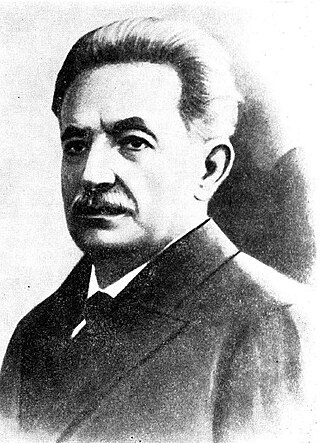
Ioan Slavici was a Romanian writer and journalist from Austria-Hungary, later Romania.
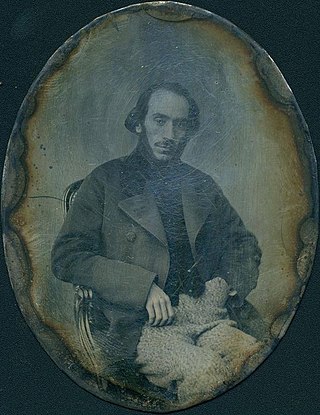
Nicolae Bălcescu was a Romanian Wallachian soldier, historian, journalist, and leader of the 1848 Wallachian Revolution.

Făgăraș is a city in central Romania, located in Brașov County. It lies on the Olt River and has a population of 28,330 as of 2011. It is situated in the historical region of Transylvania, and is the main city of a subregion, Țara Făgărașului.

Dej is a municipality in Transylvania, Romania, 60 kilometres (37 mi) north of Cluj-Napoca, in Cluj County. It lies where the river Someșul Mic meets the river Someșul Mare. The city administers four villages: Ocna Dejului (Désakna), Peștera (Pestes), Pintic (Oláhpéntek) and Șomcutu Mic (Kissomkút).

Andrei Mureșanu was a Romanian poet and revolutionary of Transylvania.

Blaj is a city in Alba County, Transylvania, Romania. It has a population of 17,816 inhabitants (2021).

The Székely Land or Szeklerland is a historic and ethnographic area in present-day Romania, inhabited mainly by Székelys, a subgroup of Hungarians. Its cultural centre is the city of Târgu Mureș (Marosvásárhely), the largest settlement in the region.
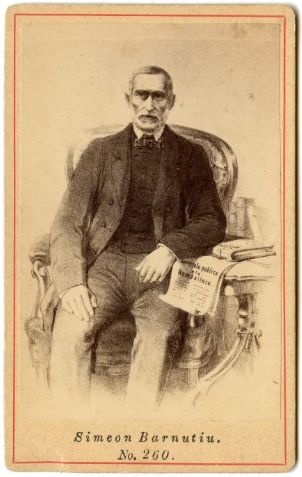
Simion Bărnuțiu was a Transylvanian, later Romanian historian, academic, philosopher, jurist, and liberal politician. A leader of the 1848 revolutionary movement of Transylvanian Romanians, he represented its Eastern Rite Catholic wing. Bărnuțiu lived for a large part of his life in Moldavia, and was for long a professor of philosophy at Academia Mihăileană and at the University of Iași.
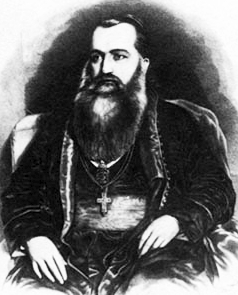
Andrei Șaguna was a Metropolitan bishop of the Romanian Orthodox Church in Transylvania, and one of the Romanian community political leaders in the Habsburg monarchy, especially active during the 1848 Revolution. He was an honorary member of the Romanian Academy.

George Bariț, was an ethnic Romanian Austro-Hungarian historian, philologist, playwright, politician, businessman and journalist, the founder of the Romanian language press in Transylvania.
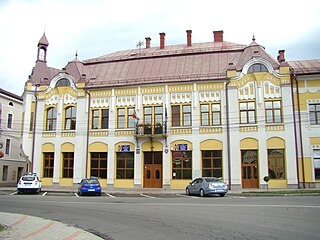
Năsăud is a town in Bistrița-Năsăud County in Romania located in the historical region of Transylvania. The town administers two villages, Liviu Rebreanu and Lușca (Szamospart).

The Hungarian Revolution of 1848 was one of many European Revolutions of 1848 and was closely linked to other revolutions of 1848 in the Habsburg areas. Although the revolution failed, it is one of the most significant events in Hungary's modern history, forming the cornerstone of modern Hungarian national identity - the anniversary of the Revolution's outbreak, 15 March, is one of Hungary's three national holidays.
The 1848–1849 massacres in Transylvania were committed in the Hungarian Revolution of 1848. According to Hungarian historian Ákos Egyed, 14,000 to 15,000 people were massacred in Transylvania in this period. The victims comprised 7,500–8,500 Hungarians, 4,400–6,000 Romanians, and about 500 Transylvanian Saxons, Armenians, Jews, and members of other groups.
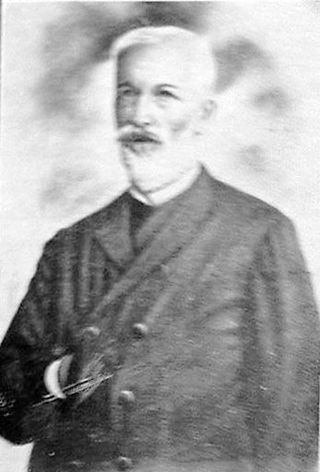
Ioan Axente Sever was a Romanian revolutionary in Austria-Hungary who participated in the Transylvanian Revolution of 1848.
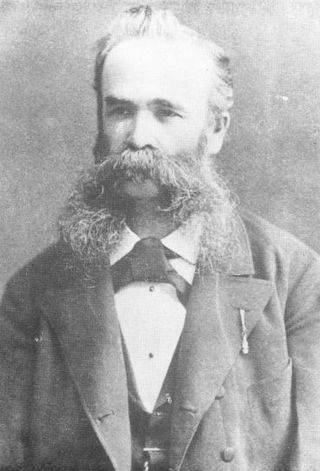
Ioan Pușcariu was an Austro-Hungarian ethnic Romanian historian, genealogist and administrator. A native of the Brașov area, he studied law until the 1848 revolution, when he took up arms. After order was restored, he embarked on a four-decade career in government that took him throughout his native Transylvania as well as to Vienna and Budapest. During the 1860s, Pușcariu was involved in the political debates of his province's Romanians, and also helped set up their key cultural organization, the Transylvanian Association for Romanian Literature and the Culture of the Romanian People (ASTRA). His historical interests lay primarily with the Transylvanian Romanians' nobility and their genealogy; Pușcariu's research into the subject secured his election to the Romanian Academy.

Ioan Bran de Lemény et Kozla, also known as Ioan Bran, was a lawyer, a revolutionary, and Transylvania's first Romanian civil servant. He was one of the organizers of the Romanian Legions and the captain of Fogaras County during the "liberal regime" (1861–1865).

















